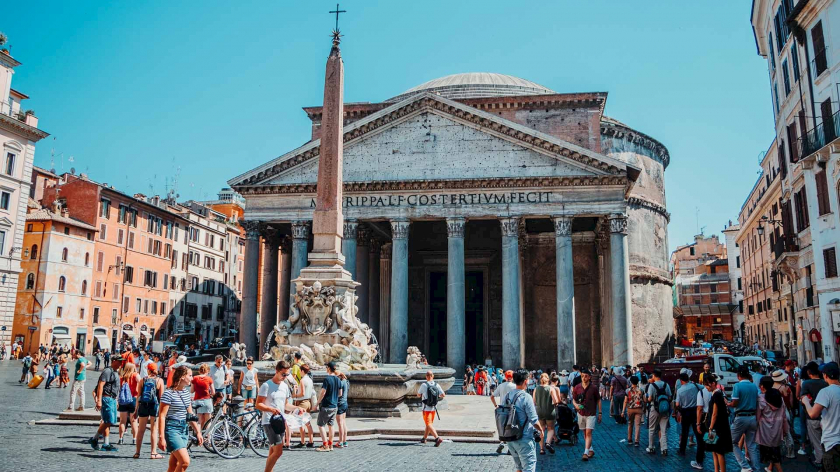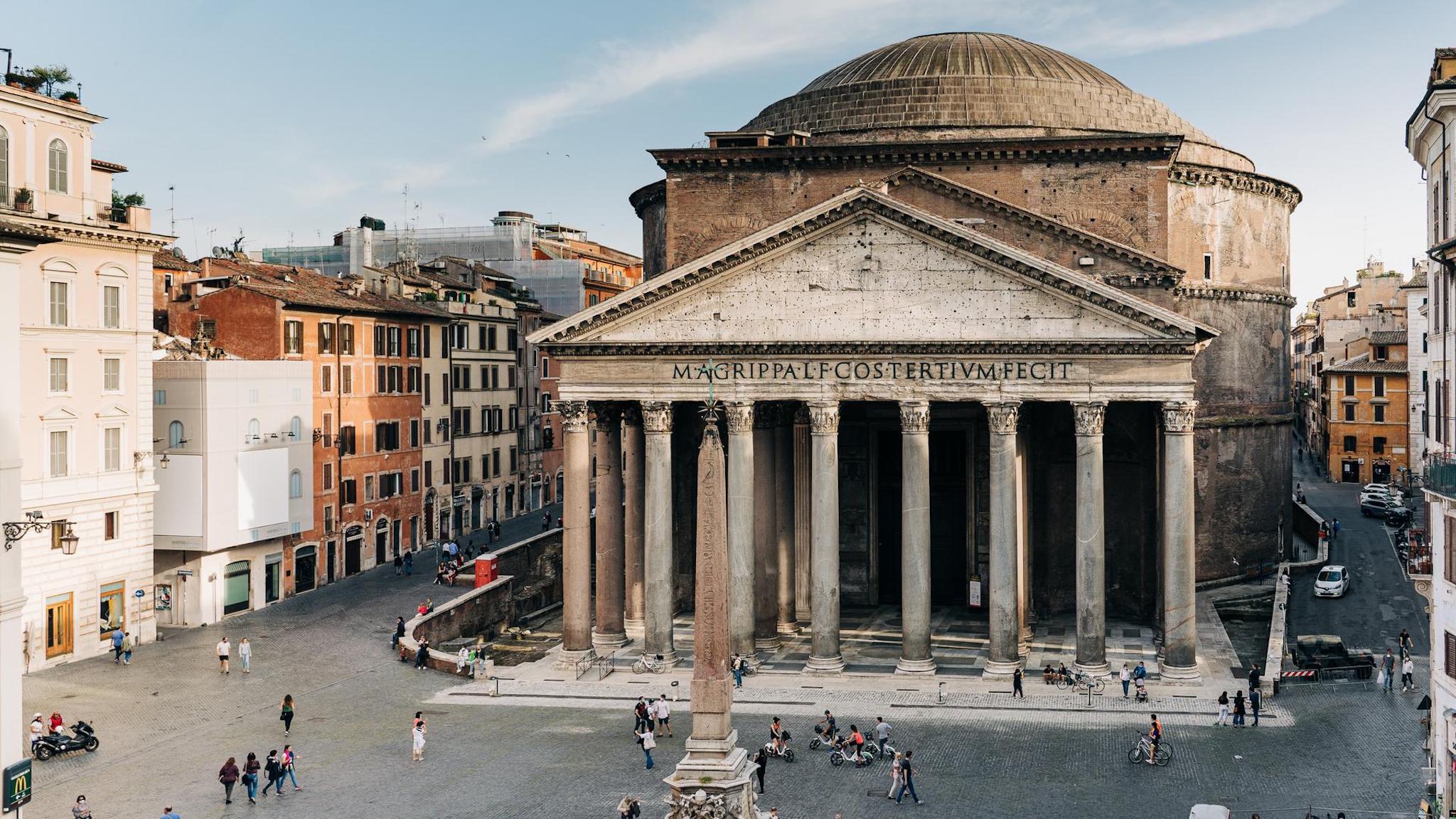The Pantheon is the most well-preserved 2,000-year-old architectural masterpiece of the ancient Roman Empire. Known as the "Temple of All Gods," its name is derived from the Latin words "pan" meaning "all" and "theos" meaning "gods."
2,000-year-old temple revived many times
The Pantheon was completed around 126–128 AD, during the reign of Emperor Hadrian. It stands on the site of an earlier structure of the same name, built around 25 BC.
The Pantheon was first destroyed in a fire around 80 AD. It was later rebuilt by Emperor Domitian, but about 30 years later it was again severely damaged by fire.

The Pantheon was destroyed twice by fire.
During this time, the Pantheon fell into disrepair due to lack of maintenance. In 118-124 AD, under the reign of King Publius Aelius Hadrianus, the Pantheon was completely rebuilt with the design that exists to this day.
In 330, the capital of the Roman Empire was moved from Rome to Byzantium (present-day Istanbul, Türkiye) by Emperor Constantine. The Pantheon was almost abandoned and not restored for a long time.
In 609, the Byzantine emperor Phocas gave Pope Boniface IV permission to convert the Pantheon into a Christian church, the Basilica di Santa Maria ad Martyres (Saint Mary and the Martyrs). This conversion played a significant role in the survival of the Pantheon, as the pope had the resources and finances to maintain the temple.

Inside the Pantheon
In addition, the Pantheon has also become the solemn resting place of great men. Among them are many familiar names such as Jean Jacques Rousseau, Voltaire, Victor Hugo, Alexandre Dumas, Marie Curie, Pierre Curie... The graves of famous writers, artists, and scientists are all solemnly placed in the basement, where visitors show their respect and admiration for those who have made the country famous and devoted themselves to human civilization.
The massive architectural works of the ancient Roman Empire
The Pantheon's structure consists of three parts: a portico with granite columns, a large domed chapel, and a rectangular area connecting the other two. All are made primarily of brick and concrete.
The Pantheon is considered a construction that is extremely precisely calculated from materials, arrangement, and construction. The dome is made entirely of concrete without reinforcement with a diameter of 43.3 m. What is more special is that the Pantheon has no windows, only a single "eye" called the Oculus, a circle with a diameter of 8.3 m in the middle of the dome, allowing light and air to enter and distribute throughout the hall. In addition, the walls and floors of the church are also decorated with marble and gilded.

The light streamed from the dome down into the lobby.
When coming to the Pantheon on sunny days, the light beams from the dome down to the hall, visitors will have a mysterious feeling as if the gods are about to step out from that light and the dome is the protective sky created by the gods.
The Pantheon temple surpasses all previous Greco-Roman temples in form and scale. The facade of the Pantheon resembles Greek temples with three rows of Corinthian columns made of stone. Each column weighs about 60 tons, is 11.8 m high, and has a diameter of 1.5 m and was brought from Egypt. Transporting the columns from Egypt to Rome was a feat at that time.
In front of the temple is a fountain, originally designed by the architect Giacomo Della Porta in 1575. The Egyptian obelisk was added in 1711. Inside the Pantheon is the tomb of the famous painter Raphael, the tomb of the first king of Italy, Emanuele II, and the tombs of King Umberto I and Queen Margherita.

The Pantheon is now the top tourist attraction in Rome, Italy.
The Pantheon's architectural design has inspired countless important works of architecture throughout history, spanning Europe and the Americas.
To this day, the Pantheon is the top tourist attraction in Rome, Italy. It is not simply a historical site or a Catholic church, but a symbol of power and a masterpiece of the once glorious Roman Empire.


































